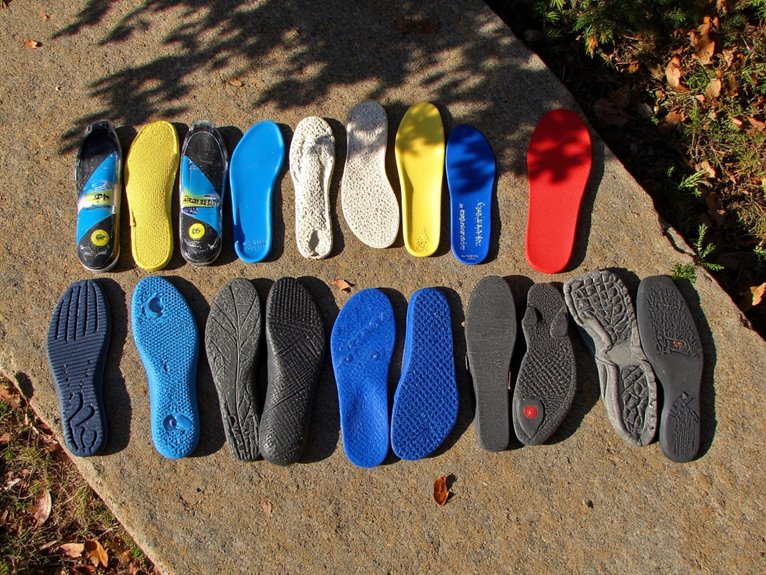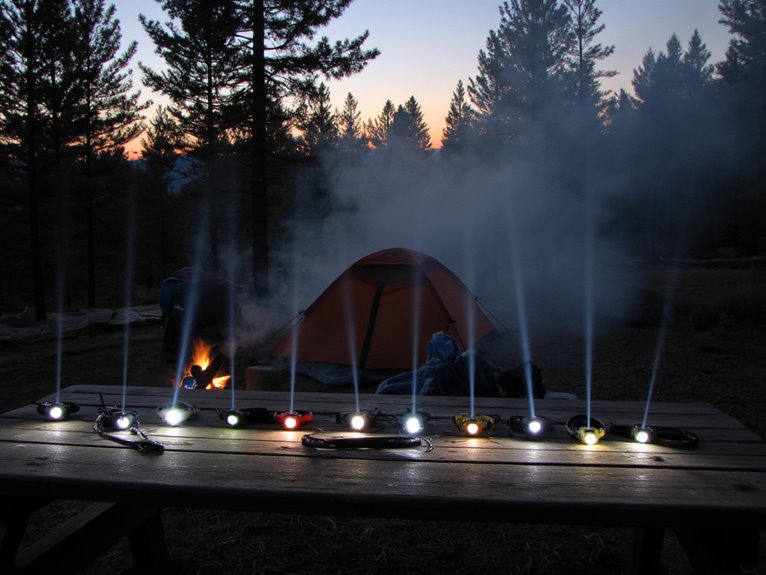How Safe Are Camping Stoves?
Camping stoves can be hazardous if not used properly, posing risks of carbon monoxide poisoning, burn injuries, and fires that can have devastating consequences. These risks can be mitigated by following manufacturer's instructions, ensuring good ventilation, and monitoring the stove's performance. Regular inspections and maintenance are also vital to prevent malfunctions. While camping stoves can be safe if used responsibly, taking necessary precautions is imperative to prevent accidents. By understanding the safety risks and taking proactive measures, campers can enjoy a safe and enjoyable outdoor experience, and exploring further can provide even more insights into ensuring a safe and successful camping trip.
We are supported by our audience. When you purchase through links on our site, we may earn an affiliate commission, at no extra cost for you. Learn more. Last update on 14th December 2025 / Images from Amazon Product Advertising API.
Camping Stove Hazards and Risks
Camping stoves pose several hazards and risks, including carbon monoxide poisoning, burn injuries, and fires, which can be devastating if not properly mitigated.
These risks are often overlooked, but it's vital to acknowledge and address them to guarantee a safe camping experience.
Carbon monoxide poisoning is a silent killer, as it's odorless and colorless, making it difficult to detect.
Burn injuries can occur from accidental contact with hot surfaces or open flames.
Fires can spread quickly, engulfing surrounding areas and causing damage to property and the environment.
To minimize these risks, it's essential to follow safety guidelines, maintain equipment, and exercise caution when using camping stoves to safeguard against accidents.
Fuel Leak and Fire Dangers
When it comes to camping stoves, fuel leaks and fire dangers are a serious concern.
Cracks in fuel lines, leaky regulator valves, and flammable vapor clouds can all contribute to a hazardous situation.
It is essential to understand these potential hazards to take necessary precautions and ensure a safe camping experience.
Fuel Line Cracks
Cracks in the fuel line of a camping stove can lead to devastating consequences, including fuel leaks and fires that can spread quickly.
A cracked fuel line can cause fuel to escape, creating a hazardous situation. This is particularly concerning when camping in dry or wooded areas, as a spark can ignite nearby flammable materials.
Inspect the fuel line regularly for signs of wear or damage.
Replace the fuel line if cracks or damage are detected.
Store the camping stove in a protected area to minimize exposure to extreme temperatures and physical stress.
Leaky Regulator Valves
Leaky regulator valves are a common issue in camping stoves, often resulting in fuel leaks and fires that can spread rapidly.
The regulator valve is responsible for maintaining a consistent fuel pressure, but when it fails, fuel can escape, creating a hazardous situation.
A leaky regulator valve can cause fuel to spray or drizzle onto the surrounding area, increasing the risk of a fire.
If the stove is not turned off immediately, the situation can quickly escalate.
Regular inspection and maintenance of the regulator valve are crucial to prevent leaks.
Campers should also be aware of the signs of a leak, such as a hissing sound or a strong fuel smell, and take prompt action to address the issue.
Flammable Vapor Clouds
Flammable vapor clouds, which can form rapidly in the vicinity of a camping stove, pose a significant fire hazard when fuel leaks occur.
These vapor clouds can spread quickly, igniting with devastating consequences.
To avoid such risks, it's crucial to understand the hazards associated with fuel leaks and take preventative measures to mitigate them.
Fuel leaks can occur due to faulty or damaged fuel lines, regulators, or valves.
Vapor clouds can ignite from open flames, sparks, or hot surfaces, causing explosions or fires.
Proper maintenance, regular inspections, and adherence to safety guidelines can help prevent fuel leaks and minimize the risk of flammable vapor clouds.
Carbon Monoxide Poisoning Threat
Carbon monoxide poisoning is a serious threat when using camping stoves, particularly in enclosed spaces such as tents.
This odorless, colorless gas can quickly accumulate and cause severe illness or even death.
To avoid carbon monoxide buildup, especially in confined areas where ventilation is limited, precautions must be taken.
Silent Killer in Tents
Operating a camping stove inside a tent can be a recipe for disaster, as the buildup of carbon monoxide from incomplete fuel combustion can quickly turn a cozy night's sleep into a deadly trap.
Carbon monoxide is a silent killer, odorless and colorless, making it difficult to detect.
Inadequate ventilation in tents can exacerbate the buildup of carbon monoxide.
Using a camping stove with a faulty or clogged burner can increase the risk of carbon monoxide poisoning.
Symptoms of carbon monoxide poisoning, such as headaches and dizziness, can be mistaken for altitude sickness or fatigue, leading to delayed medical attention.
Danger in Closed Spaces
Confined spaces, such as tents, vehicles, or campers, can become deadly traps when camping stoves or other fuel-powered appliances are used inside, as the risk of carbon monoxide poisoning increases exponentially in these environments.
The confined space prevents the carbon monoxide from dissipating, allowing it to quickly reach toxic levels.
In these situations, the risk of poisoning is heightened, and the consequences can be fatal.
It is vital to understand that even a well-maintained stove or appliance can still produce dangerous levels of carbon monoxide in enclosed spaces.
To mitigate this risk, it is imperative to always use camping stoves and fuel-powered appliances in well-ventilated areas, away from enclosed spaces, to safeguard a safe camping experience.
Deadly Odorless Gas
In addition to the dangers posed by confined spaces, carbon monoxide itself presents a stealthy threat, as it is an odorless, colorless, and tasteless gas that can silently accumulate to deadly levels.
This makes it difficult to detect, and by the time symptoms appear, it may be too late. Carbon monoxide poisoning can cause headaches, dizziness, and nausea, which can progress to more severe symptoms such as seizures, coma, and even death.
Carbon monoxide can accumulate rapidly in enclosed spaces, such as tents or campers, when camping stoves or other fuel-burning appliances are used.
The risk of carbon monoxide poisoning increases at high altitudes, where the air pressure is lower.
To minimize the risk, it's crucial to use camping stoves and other fuel-burning appliances in well-ventilated areas, and to never use them in enclosed spaces.
Safety Precautions for Campers
When camping in remote areas, campers often underestimate the importance of taking safety precautions with camping stoves, which can lead to accidents and even fatalities.
To mitigate risks, campers should always follow the manufacturer's instructions and take necessary precautions to prevent accidents.
This includes ensuring good ventilation, keeping a safe distance from flammable materials, and monitoring the stove's performance.
Additionally, campers should always have a fire extinguisher or a bucket of water nearby in case of emergencies.
It is also essential to regularly inspect and maintain the stove to prevent malfunctions.
Choosing the Right Camping Stove
With safety precautions in mind, selecting the right camping stove can significantly enhance the overall camping experience, and there are several factors to consider when making this important decision.
The type of fuel, stove design, and cooking capacity are all crucial considerations.
Fuel type: Decide between liquid fuel, canister fuel, or alternative energy sources, considering factors like availability, cost, and environmental impact.
Stove design: Choose between compact and lightweight options or more feature-rich stoves with multiple burners and cooking surfaces.
Cooking capacity: Consider the number of people you'll be cooking for and the type of meals you'll be preparing, ensuring your stove can handle the demand.
Proper Use and Maintenance Tips
Proper care and maintenance of your camping stove can substantially prolong its lifespan and guarantee peak performance.
To achieve this, always read and follow the manufacturer's instructions for use, maintenance, and storage.
Regularly clean the stove, burner, and pot supports to prevent food residue buildup.
Store the stove in a dry, protective case when not in use.
Perform routine checks on the stove's fuel system, ensuring all connections are secure and there are no signs of wear or damage.
Additionally, always use the correct type and amount of fuel, and never leave the stove unattended while in use.
Avoiding Accidents in Windy Conditions
Camping stoves can be notoriously finicky in windy conditions, and even the most experienced campers can find themselves struggling to maintain a stable flame.
Wind can extinguish the flame, cause the stove to malfunction, or even lead to accidents.
To avoid accidents in windy conditions, it's essential to take necessary precautions.
Use a windscreen or windbreak to shield the stove from gusts.
Position the stove in a protected area, such as behind a tree or a wall.
Monitor the weather forecast and adjust cooking times accordingly, avoiding cooking during strong winds.
Camping Stove Safety Regulations
When selecting a camping stove, it is vital to verify that the model meets the safety regulations and standards set by organizations such as the American Society for Testing and Materials (ASTM) and the International Organization for Standardization (ISO).
These organizations establish guidelines for camping stove design, performance, and safety features.
For instance, ASTM standards dictate requirements for stove stability, fuel leakage, and flame failure shut-off.
In the same way, ISO standards govern stove performance in various environmental conditions.
Look for certifications from these organizations or equivalent national standards to confirm your camping stove meets the required safety standards.
Safe Camping Stove Storage Practices
After ensuring your camping stove meets safety regulations, attention should turn to storing it safely to prevent damage, contamination, and unwanted leakage. Proper storage is vital to maintaining the stove's performance and longevity.
Store the stove in a dry, well-ventilated area to prevent moisture buildup and corrosion.
Keep the stove away from flammable materials and heat sources to minimize the risk of fires.
Clean the stove thoroughly before storage to remove any food residue or debris that could attract pests or cause damage.
Proper storage is essential to maintaining the stove's performance and longevity.


